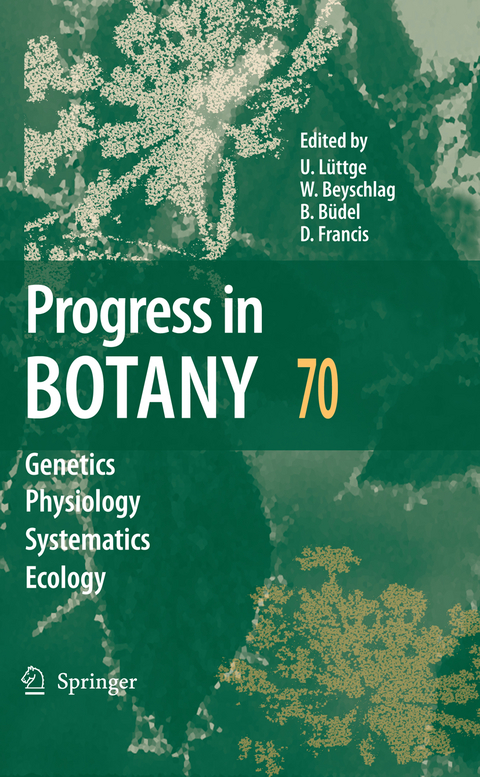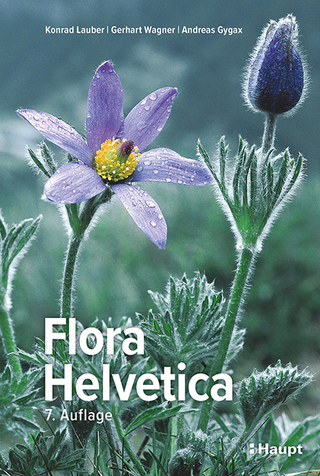
Progress in Botany 70
Springer Berlin (Verlag)
978-3-642-08799-8 (ISBN)
Time and change characterise the natural world, but in the biological sciences, by comparison with spatial measurements, time is a somewhat neglected parameter. Structural analyses of great depth and elegance have taken our spatial understa- ing to atomic dimensions, where distances are measured in Å. To obtain temporal measurements appropriate to this spatial scale, dynamics on an attosecond time- 18 scale (10 s) are required in order to visualise physico-chemical mechanisms (Baum and Zewail 2006). For certain specific reactions of molecular components obtained from biological sources (e. g. the formation of carboxyhaemoglobin by the oxygenation of haemoglobin), probing of picosecond reactions are important (Brunori et al. 1999). In plants, femtosecond lifetimes of excited states of chlo- phyll are key to the photosynthetic light reaction. These considerations underline the extreme range of dynamic interactions that are necessitated for an understa- ing of the living organism, for if we include the long history of evolutionary change 9 (Fenchel 2002), an upper limit to our studies would extend over about 3. 8 × 10 years (Fig. 1). When the dynamic range of biological processes is to be considered, we must be aware that the system as it performs in vivo is a heterarchy with interactions of great complexity that occur, not merely within a level but between levels, and often across widely-separated time domains. The living state is better considered to be homeodynamic rather than homeostatic (Yates 1992; Lloyd et al. 2001).
Ulrich Lüttge lehrte bis zum Jahr 2004 als Ordinarius am Institut für Botanik der Technischen Universität Darmstadt. Ulrich Lüttges Arbeitsgruppe beschäftigt sich u.a mit Membranphysiologie und -biochemie, circadianer Rhythmik von Photosyntheseprozessen sowie dem antioxidativen Verteidigungssystem der Pflanze.
Until 2004 Ulrich Lüttge taught at the Institute for Botany at the TU Darmstadt. He is an experienced teacher and is concerned with membrane physiology and biochemistry, circadian rhythms among photosynthesis processes as well as the antioxidative defense system of plants
Review.- From Liver to Leaves: Memories of a Plant Biochemist.- Genetics.- What's New in the Plant Cell Cycle?.- Physiology.- Solute Uptake in Plants: A Flow/Force Interpretation.- Oscillations, Synchrony and Deterministic Chaos.- Structure and Regulation of Plant Vacuolar H+-ATPase.- The Role and Regulation of Sugar Transporters in Plants with Crassulacean Acid Metabolism.- Ecology.- Epiphytic Plants in a Changing World-Global: Change Effects on Vascular and Non-Vascular Epiphytes.- Resolving the Dryland Decomposition Conundrum: Some New Perspectives on Potential Drivers.- Agricultural Crop Models: Concepts of Resource Acquisition and Assimilate Partitioning.- Clustered Distribution of Tree Roots and Soil Water Exploitation.- Quaternary Palaeoecology: Major Palaeoecological Problems of Europe.- Water Relations in the Mycorrhizosphere.- Erratum.
| Erscheint lt. Verlag | 11.11.2010 |
|---|---|
| Reihe/Serie | Progress in Botany |
| Zusatzinfo | IX, 283 p. |
| Verlagsort | Berlin |
| Sprache | englisch |
| Maße | 155 x 235 mm |
| Gewicht | 445 g |
| Themenwelt | Naturwissenschaften ► Biologie ► Botanik |
| Schlagworte | Assimilat • botanics • geobotany • Physiology • plant ecology • Plant genetics • Plant morphology • Plant Physiology • root structure • Systematics |
| ISBN-10 | 3-642-08799-X / 364208799X |
| ISBN-13 | 978-3-642-08799-8 / 9783642087998 |
| Zustand | Neuware |
| Haben Sie eine Frage zum Produkt? |
aus dem Bereich


